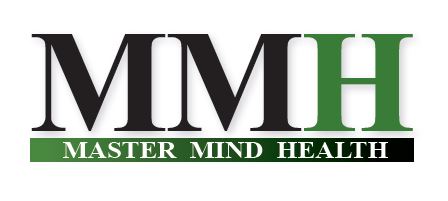
🧐 Analyzing the Toxins from the Field of Master Mind Health (MMH) 🌿
Shared from the research of: Joseph Mercado 🧒
Article Author: Mark Hyman, M.D. 🧑⚕️
To: Health Lover 🌿
Blog Post #1207 📌
Re: Heavy Metals 🤮
Date and Time: Monday, March 7, 2022 at 5:10 p.m. ⏰
Dear Health Lover
Invisible, odorless, and virtually undetectable to us, heavy metals are increasingly drawing the attention of many functional medicine practitioners who believe they may be contributing to varied chronic health issues.
Director of the Cleveland Clinic for Functional Medicine Dr. Mark Hyman diagnoses and treats heavy metal toxicity, which is relatively rare.
But he says we’re all exposed to heavy metals on a daily basis and can benefit from taking a few steps to reduce our exposure and boost our body’s innate detoxification system.
Heavy metals are chemicals naturally present in the earth, but have become concentrated due to human activity.
While some metals are essential nutrients in our diets—zinc, iron, magnesium—other common toxic metals have polluted our oceans, soil, and the environment.
Common toxic heavy metals, such as mercury, arsenic, lead, or cadmium, can accumulate in a person’s body, causing them to get sick.
Hyman, who has spent his career studying the impact food has on our mental and physical health, takes a diet-first approach to detoxing heavy metals.
He’s known for debunking dietary myths and misconceptions. (See his latest book, Food: What the Heck Should I Eat? and listen to him on The goop Podcast.)
He’s also known for pushing science forward to more closely examine understudied health issues—and heavy metals is one we have more to learn about.
We spoke with Hyman about some of the potential symptoms of heavy metal toxicity, available testing and detoxing methods, and how to avoid toxins in the first place.
What are some common symptoms of overexposure to heavy metals?
An unhealthy accumulation of heavy metals can disrupt the body’s homeostasis and cause a variety of symptoms.
The most common symptoms are chronic fatigue, depression, anxiety, insomnia, digestive problems, and there is some evidence that heavy metals may contribute to autoimmune diseases.
Heavy metals can affect our biology in multiple ways.
They can cause cellular damage by damaging our mitochondria (the parts of our cells that produce energy), disrupt our enzyme function, and dysregulate hormone function.
Preliminary evidence suggests that heavy metals may also lead to autoimmunity as a result of the body overstimulating the immune system.
Heavy metals are also neurotoxins, which are highly damaging to brain cells.
Mercury and lead are especially potent neurotoxins, which interfere with neuron function and increase oxidative stress.
Heavy metals cause damage on a cellular level, leading to potentially long-lasting and irreversible effects.
Other conditions that have been proposed to be affected by heavy metals are obesity, ADD, autism, Alzheimer’s, Parkinson’s, and heart disease.
How do you measure heavy metal levels?
Many traditional physicians have very limited training in diagnosing and treating patients with heavy metal poisoning.
Their teaching is often limited to diagnosing lead exposure in children, and heavy metals can be a neglected factor in treating chronic diseases.
Many things can lead to any given condition, but it’s essential to look at heavy metals as a potential factor.
If you think you may have high exposure to heavy metals, I recommend working with a functional medicine practitioner.
They will be able to test your levels and assist you in a safe detoxification process.
You can check the Institute of Functional Medicine and the American College for Advancement in Medicine to find a practitioner near you.
Specialized tests may be necessary to determine an individual’s exposure.
These tests assess your body’s detoxification system, including genetic testing for detoxification enzymes, as well as your current or recent exposure to heavy metals. Different tests can provide different levels of information.
The most common are:
Blood tests: These are used to detect your current heavy metal exposure.
When an individual is exposed to a heavy metal, it will stay in their blood for about ninety days.
If a heavy metal is detected from a blood test, it signifies that the exposure was recent.
Newer blood testing can also distinguish between inorganic mercury (from pollution or fillings) and methylmercury (from fish).
Hair testing: Metals remain in the hair for a few weeks after exposure.
Hair testing is a simple and effective way to trace exposure to certain types of mercury and heavy metals, which blood and urine tests cannot.
Although a hair test can’t detect the total body load, it’s able to detect specific types of mineral imbalances and deficiencies in the body.
Chelation challenge testing: This is a heavy metal challenge test preformed using chelating agents under the supervision of a doctor.
In some cases, the challenge test may be the best way to test for long-term body burden.
Chelating agents are compounds that contain sulfur or other chemical groups, which bind to the heavy metals in your body and help remove them from your system.
These prescription medications, such as DMSA, EDTA, or DMPS, are administered by doctors trained in heavy metal detoxification.
Typically, a doctor administers the medication either orally or intravenously and then collects urine samples for a period of two to six hours.
Some doctors do unprovoked twenty-four-hour urine testing, i.e., not involving a chelating agent, but that only detects current exposure, not long-term body burden.
Bone testing: This is often used to assess the body’s burden of lead. When we are continuously exposed to lead from our soil and water, it is stored in our bones.
What are the pros and cons to the different testing methods?
Most doctors measure only blood levels, which I find misleading.
These tests don’t address stored levels in bone, organs, and tissues.
Metals in the blood are either excreted or stored in the tissues, so if there is no current exposure, the test can be skewed.
Hair tests also tend to provide only a partial picture.
This test typically looks for only the mercury found in fish and not the type found in dental fillings.
Newer tests that use blood, hair, and urine—such as the Quicksilver Mercury Tri-Test—can produce more-detailed results.
They can detect the specific type of mercury in your system and whether it comes from pollution, dental amalgams, or fish.
One way to find out your total body load of heavy metals is to take a chelation challenge test.
This test is used widely by physicians who practice environmental and functional medicine but is still not widely accepted in traditional medicine.
As a practicing physician for thirty years, I have used this test on tens of thousands of patients, including myself.
Having experienced the harmful effects of mercury and also the benefits of chelation, I think it’s unfortunate that this approach hasn’t been taken more seriously.
It’s also unfortunate that given the evidence of its effectiveness and safety, it’s still not utilized in medical practices.
Chelation challenge tests works by binding to the mercury like flies to flypaper.
The body’s own flypaper is called glutathione, which is the most powerful detoxification compound naturally produced in the body.
Certain genetics and an overload of environmental chemicals may lead to depletion of glutathione.
Luckily, healthy levels of glutathione can be increased and supported through a healthy diet and added supplements.
Medical sulfur-based chelators are also helpful for when the body’s resources have been depleted.
Again, they should be administered only by a trained physician.
The most reliable testing is done by Doctor’s Data.
Once you’ve tested for heavy metals, what are the next steps?
Chronic low-level metal toxicity is common, is underdiagnosed, and can lead to a myriad of vague symptoms, including chronic fatigue, depression, insomnia, skin, digestive disorders, and more.
Removing exposure and supporting the body’s own innate detoxification is often sufficient for most people.
However if symptoms don’t resolve, further testing and therapy is necessary.
Before working to remove heavy metals from your system, I recommend doing a few things to improve your overall health and detoxification system, including:
Remove your exposure to heavy metals.
Increase your intake of detoxifying foods, such as cruciferous vegetables, onions, garlic, green tea, and cilantro.
Increase your fiber intake with foods like flaxseeds, legumes, vegetables, brown rice, quinoa, nuts (almonds, walnuts, pecans, or hazelnuts), or low-sugar fruits.
One of my favorites is glucomannan (GM), which comes from the root of elephant yam but can be taken in supplement form.
Consume high-quality protein from foods like nuts and seeds, grass-fed beef, grass-fed lamb, bison, elk, or pasture-raised pork.
When buying meat, look for labels such as grass-fed, USDA organic certified meat, Animal Welfare Approved, Certified Humane, or Food Alliance Certified. When buying beef, bison, goat, lamb, and sheep, make sure it is certified by the AGA.
If you eat bacon, sausages, or other processed meats, buy them from local farmers to avoid preservatives or additives.
Other snacks include nut butter packs, grass-fed jerky, garbanzo beans, and hard-boiled eggs.
Optimize your nutrient levels of minerals such as selenium, iron, zinc, B vitamins, and vitamin C for glutathione support.
Once you’ve made those dietary adjustments, you can begin working to remove metals from your body in a number of ways.
For example, finding a dentist to perform a safe amalgam removal.
This involves removing mercury or silver fillings from your teeth to reduce your exposure to heavy metals.
There have been studies showing how dental amalgams release mercury, which is then absorbed by the body and may cause health problems.
Unsafe removal can release mercury into the body and cause potential health risks, which is why it is critical that it be done by a dentist trained in safe amalgam removal.
Visit the International Academy of Oral Medicine and Toxicology for dentists who practice this approach.
To help remove heavy metals stored in the body, doctors may prescribe chelating agents or other supplements that bind to the metals and remove them from your gut.
These are the same agents used in chelation testing that remove any existing metals through your urine and stool.
For less severe exposure, I advise people to use other, more gentle methods to support detoxification.
These include glutathione supplements, NAC, lipoic acid, B vitamins, vitamin C, selenium, or zinc.
Other natural binders include alginates and silica.
Each treatment plan is decided on an individual case-by-case basis.
When is chelation therapy recommended? What are some of the risks?
Chelation therapy is a specialized therapy used to remove mercury and lead from the body.
It is administered by a physician and given to a patient intravenously.
Patients are also given the option of taking DMSA orally.
The agent given binds to the toxins in the bloodstream and is removed through the patient’s urine.
I may prescribe chelation therapy for severe cases, such as chronic fatigue, depression, kidney failure, or a severe autoimmune condition.
For those struggling with debilitating symptoms, it can be extremely helpful.
There are some risks associated with chelation therapy, including potentially releasing vital nutrients alongside the toxins.
There have also been reported allergic reactions to certain chelators.
For most patients, the risks outweigh the benefits, but it’s essential to work with an experienced practitioner who knows how to help you safely chelate.
What foods and supplements do you recommend to help detox from heavy metals?
Cruciferous vegetables—at least one cup daily.
These include broccoli, kale, collards, Brussels sprouts, and cauliflower.
Garlic—two to three cloves every day (or take a garlic supplement).
Organic green tea in the morning instead of coffee. Green tea catechins and phytochemicals upregulate the body’s levels of glutathione, the major metal detoxifier, and also may bind the metals for excretion.
Fresh vegetables juices, such as celery, cilantro, parsley, and ginger.
Prepared herbal detoxification teas containing a mixture of burdock root, dandelion root, ginger root, licorice root, sarsaparilla root, cardamom seed, cinnamon bark, and other herbs.
- Dandelion greens are used traditionally to help liver detoxification, improve the flow of bile, and increase urine flow.
- High-quality sulfur-containing proteins, including eggs, whey protein, garlic, and onions.
- Bioflavonoids, which are found in grapes, berries, and citrus fruits.
- Rosemary, which contains carnosol, may support detoxification enzymes.
- Curcuminoids (turmeric and curry) for their antioxidant and anti-inflammatory benefits.
- Burdock root is traditionally used to aid in detoxification.
- Chlorophyll found in dark-green leafy vegetables and in wheatgrass.
As for supplements, I recommend taking vitamin C, selenium, zinc, n-acetylcysteine, lipoic acid, milk thistle, and garlic.
Pycnogenol, made from maritime pine bark, also comes in a supplement form and can support detoxification and circulation.
I often recommend Metagenics, Thorne, or Pure Encapsulations for supplements.
What foods should we steer clear of to minimize our exposure to heavy metals, and which are safe to eat?
In terms of mercury, we are mostly exposed to this toxic metal from ingesting contaminated fish or having dental amalgams or silver fillings.
One way you can reduce your exposure to mercury is by avoiding large ocean fish, such as tuna, Chilean sea bass, halibut, grouper, swordfish, shark, and tilefish, and river fish.
I recommend eating only small, wild fish. If it fits in your pan, it is okay.
The best rule of thumb is to eat the SMASH fish: sardines, mackerel, anchovies, wild salmon, and herring.
Intensive food-production methods have been said to make some traditionally safe foods risky.
Are there common misconceptions surrounding healthy foods?
Global demand has grown so rapidly that we’re depleting our oceans and turning fishing into an unsustainable practice.
As a result, countries across the globe increasingly rely on factory-farmed fish operations.
That may seem like a good solution to the problem of overfishing, but in reality it brings a whole new set of health and environmental challenges to the dinner table.
Half of the seafood Americans consume comes from farms.
According to researchers at Johns Hopkins, it’s the fastest-growing food-animal sector, ahead of even the beef and poultry industries.
Aquaculture production has nearly tripled in the last two decades, bringing with it a significant increase in the use of antibiotics to quell diseases and infections that can run rampant in overcrowded factory fish farms.
Traditionally, farmed fish were raised on manufactured feed—mostly composed of fishmeal and fish oil derived from wild fish—which is similar to their natural diets.
However, feeding the growing numbers of farmed fish has become unsustainable. Now many farmed fish are given manufactured feed that consists of corn, wheat, soy, and vegetable oils like canola—none of which are found in their natural diets—or meal that can contain toxic chemicals.
While it’s best to eat wild fish, we’re no longer entirely in the clear because of pollution.
The coal and gas industries have spent decades polluting our oceans and rivers with mercury and other contaminants.
And while we may not be able to visibly see these chemicals, they’re absorbed by fish and then by those who eat them—you and me! Eating seafood today is a balancing act between making sure to not eat too much fish and, when you do, making sure you consume the right types.
In addition to fish, factory farming and industrial agriculture have turned the food industry upside down.
There are now also heavy metals found in those types of food. Wine may be grown on stakes made from pressure treated lumber containing arsenic which may leach into the wine. Rice may also contain arsenic from the groundwater, although this is not the case for rice grown in the US.
What are some steps we can take—in our homes, with the products we buy, the foods we eat—to minimize our exposure to heavy metals and other toxins?
While there are several ways to reduce your exposure, my top recommendations are:
- Avoid plastics. A recent study found microplastic particles in leading international bottled water brands. You can also consume these particles through certain food packaging. I recommend stainless steel water bottles and glass containers like Pyrex to store leftovers. Instead of buying plastic water bottles, install a water filter at home. I like reverse-osmosis filters.
- Detox your home. Stick with natural, simple products. Thrive Market carries the best cleaners from Seventh Generation and other eco-friendly, nontoxic companies. Check out EWG’s skin-deep guide. They also have a great guide to reducing toxic household cleaning products. You can even make your own body products using coconut oil and other ingredients. If you can eat it and also put it on your skin, that’s even better! Stop eating mercury. Stick with small, cold-water fish, like salmon, that have lower mercury levels.
- Choose organic fruits and vegetables to minimize environmental toxin exposure. The EWG also has a list of fish with low mercury levels.
- Exercise and sweat. Exercising and sweating help rid your body of toxins. Get moving and try a sauna, steam, or bath.
- Take quality supplements. Talk to your doctor about supplements that support detoxification, including zinc, vitamin C, and vitamin B complex, as well as special glutathione-boosting compounds such as n-acetyl-cysteine, alpha-lipoic acid, and milk thistle.
- Address toxicity in your home. If you suspect lead or other poisons are in your paint or floors, consult an expert to remove them safely. If you live in a house built before the 1970s, it is possible it may contain leaded paint. Also, get your water tested for contaminants including lead, which commonly come from old pipes.
- Eat organic when you can. And when you can’t, follow EWG’s Dirty Dozen and Clean Fifteen lists. They show you the fruits and veggies that contain the most—and least—amount of pesticide residue.
About the Author:
Mark Hyman, M.D., is the founder and medical director of the UltraWellness Center. He is dedicated to finding the root causes of chronic illnesses and focuses on the role diet plays in health and wellness.
Hyman has written nine number one New York Times–bestselling books, including Food: What the Heck Should I Eat?, 10-Day Detox Diet, and Eat Fat, Get Thin.
He is also the director of the Cleveland Clinic for Functional Medicine and chairman of the board of the Institute for Functional Medicine.
The views expressed in this article intend to highlight alternative studies. They are the views of the expert and do not necessarily represent the views of goop. This article is for informational purposes only, even if and to the extent that it features the advice of physicians and medical practitioners. This article is not, nor is it intended to be, a substitute for professional medical advice, diagnosis, or treatment and should never be relied upon for specific medical advice.
Content Source: Goop 🌎

 Email Us a Message
Email Us a Message 

Please send us a personal message below and we will serve you momentarily.
We appreciate you visiting the MMU Global Research Directory
For more blog posts, videos, articles, and to generate more knowledge, please feel free and…






 Fly Over to the MMU Facebook Page with Hoot
Fly Over to the MMU Facebook Page with Hoot
 Visit the MMU Facebook Group Today
Visit the MMU Facebook Group Today